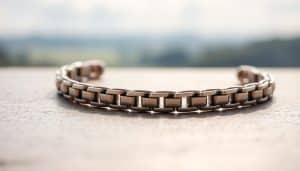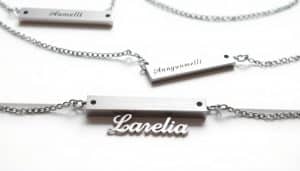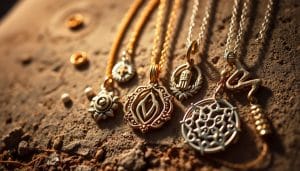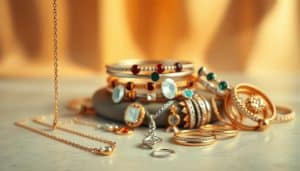What is Costume Jewelry? From Definition to Craftsmanship, A Comprehensive Guide

What is Costume Jewelry? From Definition to Craftsmanship, A Comprehensive Guide

Introduction: The concept of Costume Jewelry
What is costume jewelry, how is it made, what are the cost factors involved in its creation, and how does the industry practice sustainability?
Costume jewelry is the treat of fashion, where looking great need not come with a huge price tag unlike fine expensive jewelry, making them a go to accessory for any wardrobe and everybody. Here at Dongguan HonHo Jewelry, a professional costume jewelry manufacturer, we determine that these sparkling accessories have a story of their own — far deeper than you may think.
Costume jewelry, in its most essential form, is the decorative embellishment worn on the body, but created with non-precious materials to provide a more budget-conscious option to fine jewelry. These items are more than movement embellishments — they tell someone’s style story and announce trends in fashion & craft process.
This massive guide is going to give you the low down on everything there is to know about costume jewelry – from its rich history, how it’s made, which materials to look for, the sustainability movement taking over the industry, and how to style it — no other online source gets into this level of detail!
A Long History of Costume Jewelry
Ancient Beginnings
The idea of decorative, non-precious jewelry is thousands of years old. The Egyptians and Romans, even in ancient times, created ornamental articles from base metals, glass, and shells. The early forms of costume jewelry were more decorative or symbolic, often denoting social status or religion.
The New Costume Jewelry
While decorative accessories have been around since the dawn of man, the term “costume jewelry” came onto the scene only in the early 20th century. The industrial revolution allowed for manufacturing methods that enabled the mass production of jewelry pieces designed to match particular items of fashion or “costumes”—hence the name.
The Coco Chanel Revolution

Costume jewelry took a quantum leap in the 1920s, thanks to the visionary fashion designer Mademoiselle Coco Chanel who embraced the use of dramatic and ostentatious non-precious jewelry in her fashion design collections. Chanel changed the way people thought of accessories, combining real jewels and faux ones and glass and faux pearls, flouting the fine vs. costume jewelry definition. Her belief that jewelry should be worn for style, not just for ostentatious displays of wealth, changed the industry forever.
The Golden Age: 1930s-1950s
The mid-20th century is a time often hailed as the golden age of costume jewelry. During the Great Depression and World War II, when precious materials were scarce, the designers resorted to substitutes which encouraged amazing ingenuity. In the U.S., companies such as Trifari, Coro and Miriam Haskell rose to prominence, producing pieces that are now highly collectible. Hollywood’s reach even raised the status of costume jewelry, with celebrities like Marilyn Monroe and Audrey Hepburn routinely donning opulent costume pieces on and off screen.
Modern Evolution
The costume jewelry markets of today are diverse and constantly changing, with eco-conscious practices, sustainable materials, and plenty of international design influences, all colliding to create unique new designs. The democratization of fashion solidified costume jewelry’s role in modern wardrobes, with the likes of designer collaborations and fast-fashion retailers providing stylish accessories at all price points.
The Process of Manufacturing: A Union Behind It

The one big hole in the information on line about costume is a detailed description of how these pretty things are made. Having a knowledge of the manufacturing process enables consumers to appreciate the craftsmanship behind the product, as well as make more informed purchasing decisions.
Design and Conceptualization
Every piece of costume jewelry starts as a design idea. Design Process at Dongguan HonHo Jewelry
- Fashion Trends: also referring to runway shows, but from the consumer end
- Design: Generate initial sketches and design concepts
- Selecting Materials: Analyzing what materials will best maintain the look desired and how long it is intended to last
- Design Prototype: Develop 3D models or physical prototypes to test
Selection and Preparation of Materials
Once designs are set, materials are chosen according to aesthetic factors, demands for durability and price points. Common base metals include:
- Brass: An alloy of copper and zinc valued for its lustrous yellow color and formability
- Zinc alloys: Oftentimes for intricate type casting
- Aluminium: Light-weight properties are well recognised
- Copper: The unique color with good electric conductivity
For embellishments, we use:
- Glass or acrylic stones
- Crystal components
- Enamel
- Resin and plastic elements
- Stones made to look like its natural counterpart
Manufacturing Techniques
There are several aspects of the production of costume jewelry that take place as essential processes but are seldom cited on the internet:
- CAD/CAM Technology: Today, most costume jewelry is created using computer-aided design (CAD) to develop digital 3-D models for production.
- Casting: Liquid metal is poured into molds to form three-dimensional shapes. The method is perfect for complex geometry and further printing of minutiae can be achieved.
- Stamping: Metal sheets are cut and formed with dies and presses. This method is effective for parts that are flat or have low dimensionality.
- Electroplating: A very thin layer of precious metal is deposited onto the base metal through an electrochemical process, which is why costume jewelry has a luxurious appearance. The thickness of the plating is a huge factor in durability – the best costume jewelry also has thicker micron plating, which won’t wear off.
- Stone Setting: Crystal, glass stones, or synthetic gemstones are placed into the metal framework using prong, bezel, or channel settings.
- Polishing and Finishing: Several polishing stages yield smooth surfaces and sparkling shine
- Quality Control: Each individual product is thoroughly inspected to ensure it matches design specifications and quality specifications.
The Production Timeline
The average production time for costume jewelry from design to finished piece happy to wear is 4-8 weeks:
- Design and prototype development: 1–2 weeks
- Mold creation: 1 week
- Sample production and approval: 1 week
- Mass production: 2-4 weeks
This timeline is important to keep in mind for retailers and wholesalers as they plan seasonal collections and how to manage inventory.
Cost Factors: What Determines the Price of Costume Jewelry

Costume jewelry is often not afforded the respect it deserves, with many consumers — and even some industry professionals – unable to appreciate the factors around the varied cost of costume jewelry. There appears to be a knowledge gap that we can bridge offering insights.
Material Quality and Quantity
The final cost is very much dependent on the type and quality of the materials used:
- Higher-grade base metals improve durability but come at a higher cost
- Plating thickness (microns) impacts both price and longevity
- Premium synthetic stones or crystals are more expensive than cheap glass or plastic
Design Complexity
For more complex designs you may need:
- Additional labor hours
- More advanced manufacturing processes
- Parts that need to be put together
- More complicated quality control procedures
Production Volume
There are some underlying factors driving pricing: economies of scale in costume jewelry
- And then greater production lowers the per-item cost
- Such small-batch or limited-edition pieces generally cost more
- MOQs (minimum order quantities) impact wholesale pricing structures
Brand Positioning
Brand reputation and positioning strategy significantly influence pricing:
- High-end designer brands keep similar materials at sky-high prices
- Established manufacturers with strong proven records of quality can command more
- Cost of marketing and packaging are embedded in the final price
Where to Find Labor and Manufacturing
Production costs are affected by geographic factors:
- This means that labor costs vary widely between regions
- Regulatory requirements vary between countries
- Final pricing is influenced by import/export duties and transportation
By understanding these cost factors, retailers are able to create appropriate pricing strategies, whereas consumers are able to make informed purchasing decisions, focusing on value instead of solely on price.
Costume Jewelry Trends: Now and in the Future
Another important content black hole is forward-looking content around industry trends. As leading manufacturers, we have the best view of the jewel that is costume jewelry’s future on the horizon.
2025 Style Trends

Herewith, according to our research of the marketplace and industry projections, the next great style trends emerging for 2025:
- Bold Colors: Eye-catching colors that make a stunning statement
- Emerging trends in luxury: for example, Sustainable Luxury: eco-friendly materials featuring premium finishes that merge environmental consciousness with the aesthetics of luxury
- Global Aesthetics: Cross-Cultural Designs that fuse elements of various origins
- Tech-Inspired Jewelry: Geometric shapes, futuristic finishes, and designs inspired by technology and digital aesthetics
- Modular designs: Pieces that can be rearranged or customized
Material Innovations
There’s a revolution happening in materials within the costume jewelry industry:
- Recycled Metals: More use of recycled brass, aluminum and other metals to minimize environmental impact
- Bio-Based Plastics: A plant-derived alternative to petroleum-based plastics for things like beads and settings
- Advanced Coatings: New plating technologies that offer better durability and tarnish resistance without toxic chemicals
- Alternative Stones: Lab-created and synthetic options that can replicate the appearance of natural gemstones with more consistent properties and better ethical sourcing
Manufacturing Innovations
Production methods are advancing quickly:
- 3D Printing: Enabling complex designs and rapid prototyping that would be agonizingly difficult to do using traditional methods
- Water-Based Plating – More sustainable solutions compared to traditional electroplating processes
- Automation and Robotics: Increasing accuracy and reducing labor costs in certain stages of production
- Digital design collaboration: Cloud-based design systems that enabling collaboration between designers, manufacturers and retailers in real time
The Growing Importance of Sustainability in Costume Jewelry
Sustainable information is probably the content gap that is most pronounced in existing costume jewelry-related online resources. With the increasing awareness on environmental issues, industry representatives and consumers are more concerned about sustainable policies than ever before.
Current Challenges
The costume jewelry sector has several sustainability challenges:
- Source Material: Conventional production often utilizes newly mined metals and petroleum-derived components
- Use of Chemicals: Traditional plating and finishing this process may include hazardous chemicals
- Waste Generation: Fast fashion approach to jewelry can produce a lot of waste
- Labor: Some regions continue to struggle with supply chain transparency
Sustainable Solutions

At Dongguan HonHo Jewelry, we are taking several measures to overcome these challenges:
- Recycled Materials: Reclaimed metals have the same quality as mined metals but cause less mining impact
- Water-Based Finishes: Using water-based finishes instead of their solvent-based counterparts offers a significant VOC emissions reduction.
- Less Material: Sustainable minimalist, recyclable packaging minimizes waste while still protecting the product
- Energy efficiency: A company can reduce its carbon footprint by investing in the purchase of energy-efficient equipment and processes
Ensuring Transparency in Supply Chain: Collaborating with certified suppliers and offering evidence of ethical sourcing
Certifications and Standards
Several certifications are becoming increasingly significant within the costume jewelry sector for retailers and wholesalers wishing to substantiate sustainability assertions:
- ISO 14001: Certification for environmental management systems
- RJC (Responsible Jewellery Council): Standards on ethics, social and environmental matters
- REACH: EU rule for chemical safety
- BSCI (Business Social Compliance Initiative): Social responsibility and labor practices
Styling Tips for Different Occasions
Another content area that is often neglected but offers immense value to consumers is practical insight on how to wear costume jewelry on any occasion.
Everyday Wear
For everyday wear, think about items that:
- Arrange for maximum comfort over long periods
- They have durable finishes that won’t tarnish
- Complete your usual wardrobe Complement your usual wardrobe
- Don’t forget about your practical needs when you’re being fashionable
Recommended styles: Studs, simple pendants, thin bangles, and rings of different shapes that have secure settings
Professional Settings
For workplace environments:
- Opt for understated, polished pieces that enhance your look, not overpower it
- Choose garments – long dresses, wide bottoms, big statement jackets – that dont move or shuffle a lot.
- Choose timeless designs that exude professionalism
- Think about what’s standard in your industry – creative fields usually tolerate flashier bling than conservative ones.
Recommended styles: Pearls or small gemstone stud earrings, dainty necklaces, simple bracelets and very simple rings
Special Events
For formal occasions:
- Statement pieces can be the highlight of the attire you wear
- Think about event lighting: crystal and metallic elements reflect light beautifully in evening settings.
- It’s a balance – if you wear dramatic earrings, keep other jewelry to a minimum
- Be sure to match the formality of your jewelry to the event
Recommended: chandelier earrings, statement necklaces, cocktail rings and coordinating sets for formal occasions.
Seasonal Considerations
Adjust your costume jewelry selections to the season:
- Spring/Summer: Bright colors, natural fabrics, floral motifs
- Fall/Winter: Deep colors, thick fabrics, metallic surfaces
- Think practical: how heavy earrings will feel in the summer heat, for example, or how bracelets will layer under long sleeves.
Care and Maintenance: Extending the Life of Costume Jewelry

Proper care information is essential but often missing from online resources about costume jewelry.
Storage Solutions
Proper storage will greatly increase the longevity of costume jewelry:
- Keep parts separated to avoid scratching and tangling
- Store in a cool dry place. Avoid direct sunlight
- The use of anti-tarnish strips or silica gel packets will absorb the moisture
- Opt for in individual pouches or compartmentalized jewelry boxes
Cleaning Methods
How you clean will depend on the material:
- Metal components: After each wear, wipe with a soft, dry cloth
- For light cleaning use a mild soap solution and soft brush
- Crystal elements : Wipe with a slightly damp microfiber cloth
- Steer clear of perfumes and hairsprays (harsh chemicals)
Preventative Care
You possess foresight and can take preventative steps:
- Use cosmetics, perfumes, and hairsprays before you put on the jewelry
- Take off jewelry before swimming, getting in the shower, or playing sports
- Limit exposure to household chemicals while wearing costume elements
- Wear jewelry as the last thing you put on when getting ready to go out
- Rotate pieces often to avoid too much wear on favorites
Professional Restoration
When well-made costume jewelry shows wear:
- Metal components can be re-plated to return them to the original finish.
- Loose stones can usually be re-set by an expert
- Clasps or findings that are broken can be replaced
- Assess the value of the artifact in relation to restoration costs
Industry Insight in Choosing a Supplier for Your Costume Jewelry
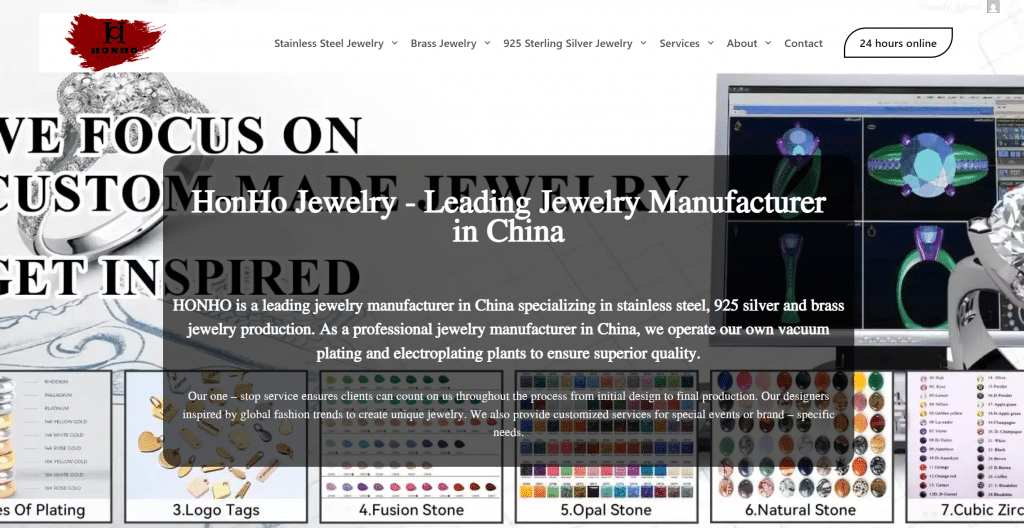
Choosing a fashion jewelry supplier is paramount for retailers and wholesalers, yet not a topic regularly covered in online content.
Key Evaluation Criteria
All these factors are essential while choosing a costume jewelry supplier:
- Production Capacity – Will they be able to meet your volume requirements and seasonal changes?
- Other Steps in the Quality Control Process:
- Performance Capabilities: Do they offer custom design services or only standard collections?
- Minimum Order Quantities: Are their MOQs suitable for your business model?
- Order Fulfillment Times (especially for restock items)
- Do they comply with international standards for materials safety and ethical production?
- Customer Service and Response: How quick to resolve concerns?
Chinese Manufacturers’ Advantage
As a Chinese jewelry manufacturer, Dongguan HonHo Jewelry has many advantages:
- Years of specialized expertise in the production of costume jewelry
- Integrated Supply Chain: Supplementing the Network of Material Suppliers and Specialized Service Providers
- Cost Efficiency – Efficient production methods that help in maintaining quality while keeping cost in control
- State-of-the-Art Technology: Invested in new equipment for consistency and innovation
- Scalability: Custom little orders as well as large production runs
- Global Compliance: Meeting international standards for materials safety and ethical production
Why choose Dongguan HonHo Jewelry?
At Dongguan HonHo Jewelry, it is our endeavor to fulfill the line between luxury and budget-friendly pieces. Every piece we create is a testament to our commitment to quality:
- Quality Materials – We use only the best base metals and plating solutions for beauty and durability.
- Skilled Craftsmanship: Our artisans combine traditional techniques with modern technology
- Trendy yet Timeless: Our design team works to stay ahead of the trends while also creating timeless pieces
- Quality Control: Rigid inspection before shipping
- Sustainable Practices: We adopt eco-friendly measures that influence our manufacturing processes
What is costume jewelry, and how to know the good quality pieces?If you want to learn more about this so that you can find elegant accessories for everyday or bolder pieces for special occasions, contact us!
FAQs About Costume Jewelry
What is costume jewelry, and what is it made of?
Costume jewelry usually consists of non-precious material, including base metals such as brass, zinc alloys, and aluminum, often overlaid with thin plating of gold or silver. Glass, acrylic, resin, plastic and synthetic stones that are made to resemble natural gemstone are also popular materials.
How do I know if costume jewelry is high-quality?
Good costume jewelry preserves two-tone plating without spotting, with smooth edges and well-in-place stones and clasps, and carries some weight. If you take care of them, high-quality pieces also wear better and longer, and may be referred to as “nickel-free” or “hypoallergenic” for sensitive skin.”
Will costume jewelry make my skin turn green?
This is why some jewelry, especially costume jewelry, can cause skin discoloration — the copper in base metals oxidizes and reacts with your skin. Quality pieces featuring proper plating or protective barriers are less likely to elicit this reaction. Applying a layer of clear nail polish to the areas that come into contact with the skin to prevent discoloration.
What is the lifespan of costume jewelry?
With the right care, quality costume jewelry can endure for many years. Factors such as plating thickness, construction quality, wear frequency, and maintenance practices have an impact on longevity. Keep pieces tucked away in a cool, dry spot, and clean gently, to prolong their lifespans.
What’s the difference between costume jewelry and fashion jewelry?
The terms “costume jewelry” and “fashion jewelry” are often interchanged. They both refer to decorative accouterments cast from non-precious materials meant to be affordable and trend-driven. Some see fashion jewelry as a step up in quality from costume jewelry, but there is no standardized difference.
What is costume jewelry made of?
Costume jewelry is also manufactured in several stages such as designing, CAD, designing, mouldmaking, casting or stamping of metal parts, setting stones, plating, polishing and quality checking. Contemporary production marries old-world techniques with advanced technologies like 3D printing and automated plating systems.
Related Posts

What is Costume Jewelry? From Definition to Craftsmanship, A Comprehensive Guide
Introduction: The concept of Costume Jewelry What is costume jewelry, how is it made, what are the cost factors involved in its creation, and how does

